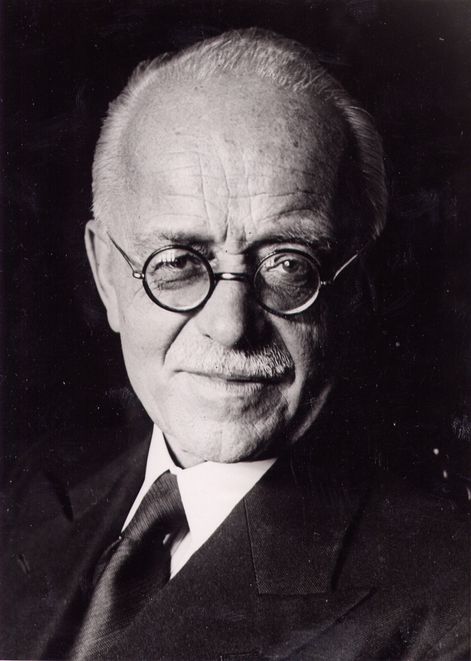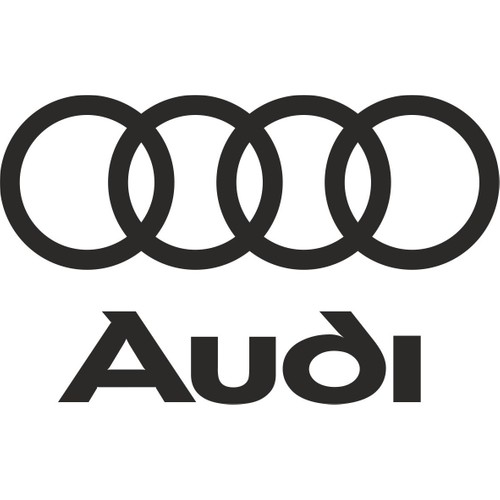Audi's story from past to present: The story of Audi, one of the world automobile giants, can turn into a novel!
The Audi brand, which was born in a small production factory, produced vehicles for the Nazis in its journey from its foundation to the present, was bought many times and struggled with lawsuits that almost came to a close. Yet Audi somehow endured and became one of the auto giants we know today.

It all started with one of Germany's successful automobile engineers, August Horch. Horch graduated from the Technical University in Mittweida, Saxony. His first job was as Carl Benz's Engine Production Department. Later, he became the head of the Motor Vehicle Production Department in this company. Horch & Cie. on 14 November 1899 in Cologne. He started his own business under the name Motorwagen Werke.
When the company became a joint stock company, it moved first to Reichenbach in 1902 and to Zwickau in 1904. August Horch left the company he founded in 1909 after disagreements with the Board of Directors and the Supervisory Board. Soon after, he founded another automobile company.
What does Audi mean?
So what would this new company be called? Horch means "Listen!" in Old German. Audi meant the same thing in Latin. That's why they chose the name Audi for their brand.
The first car of the Audi company was the Audi Type A Sport-Phaeton, released in 1910. The second model, the Type B, was launched in the same year. Both models were used for sporting events rather than for daily use, and have won the Austrian Alpine Run three times in a row.
As in every story, the founder of the company leaves in Audi's story. August Horch's reason for leaving was to obtain a high position in the ministry of transport. Fortunately, by the time August Horch left, Audi had already become a proven brand. In this way, production continued without slowing down.
In 1920, Audi launched the Audi Type K model. This model had historical significance because the Type K was the first German car to be produced with left-hand drive. Having the steering wheel on the left was both healthier in terms of safety and offered an easier handling to the drivers. Therefore, from this date on, left-hand drive cars quickly became widespread.
The appearance of the Audi logo, which is known by everyone today and has become one of the most important iconic symbols of history, took place years after its foundation. In fact, the logo was created not to represent the Audi brand, but to represent an automobile association.
In 1928, Swedish engineer Jørgen Rasmussen bought a majority stake in Audi. In 1932, Auto Union was formed with Audi, which merged with the companies DKW, Wanderer and Horch. The four interlocking rings that will become the logo of the Audi brand in the coming years were actually created to represent the Auto Union union.
Everyone has noticed the similarity between the Audi logo and the logo of the Olympic games. The Olympic Committee realized this and sued the company in 1995. The court decision found the Olympic Committee unfair and ruled that there was no similarity between the two logos. Of course, there is a visual similarity, but there is no violation of ideas.
In the following years, everything went well for Audi, the union was working well. It even became the first European automobile company to produce a front-wheel drive model with a six-cylinder engine. Then, World War II, which would bring the whole world to dust, started and Audi had to direct its production power to a different area.
We don't know if he really had to, but all of Audi's factories stopped car production during World War II and started producing armored vehicles for the German army. Audi factories trying to produce armored vehicles for Hitler caught the attention of the Allied forces and were repeatedly targeted by bombers. Fortunately, the war somehow ended.
The end of the war was an even greater devastation for Audi. Because the main production point, the Zwickau factory, remained in the Soviet-influenced East Germany region. The factory was dismantled piecemeal as war reparations and Auto Union was wiped from the business register in 1948.
The production point was moved to the freer West German region by the rulers. The factory in East Germany, on the other hand, continued production somehow, although not under the Audi name. The Trabant model produced here was accepted as a figure symbolizing the collapse of the Eastern Bloc in the following years. More than 3 million of the Trabant model, which was mediocre in its simplest definition, were produced.
Audi, which was re-established in 1949 within the scope of Marshall aids made by the United States, continued to produce front-wheel drive vehicles, but could not find enough capital to make mass production. The company was in a difficult situation.
Desiring to take advantage of this difficult situation, Daimler-Benz bought a part of the company in 1959, then the whole. However, they sold it later as the production model was not suitable for them. In 1969, Audi was bought by Volkswagen, another important automobile giant.
Volkswagen did not want Audi to design cars under its own brand name. They wanted to use Audi factories as a kind of spare parts production point. Audi engineers did not accept this situation and produced the Audi 80 model in 1972 and released it to the market. Audi had shed its dead soil and became independent again.
Of course, everything did not go well again and this time the blow came from the new continent. In the United States, 6 people have sued the Audi 5000 for an undesirable acceleration problem. They claimed that 6 deaths and 700 crashes between 1982 and 1987 were due to unintentional acceleration failure seen in the Audi 5000 model.
As a result of the research carried out about these events mentioned in a program called 60 Minutes, it was revealed that all these events were fictionalized by the producers of the program. Due to a small flaw in the system, the vehicle was experiencing a small acceleration, but the accident was not caused by this small acceleration, but by the excited driver. Audi was found not guilty as a result of the lawsuit.

